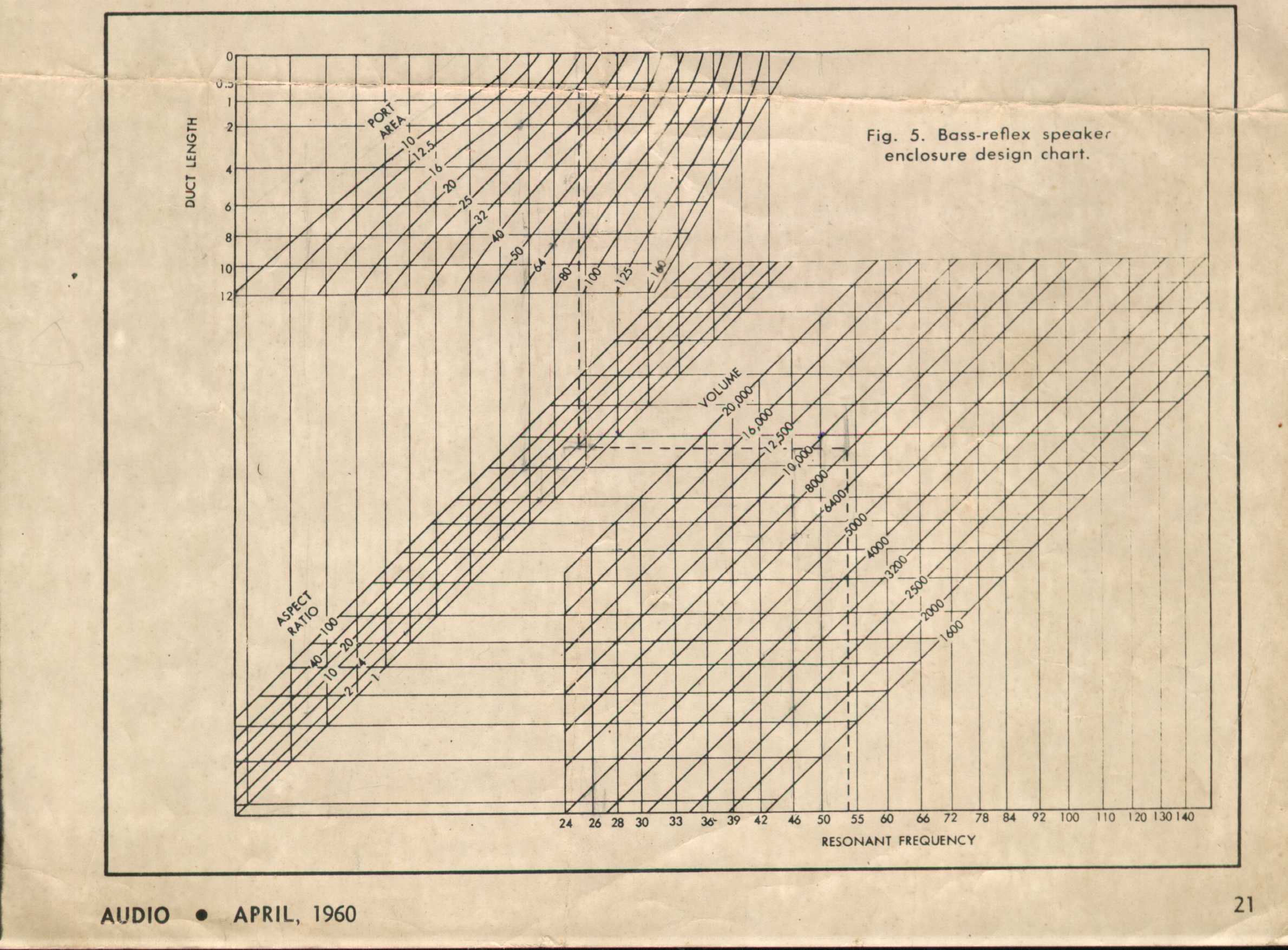The following design method for bass reflex enclosures is reproduced from the April 1960 issue of the famous "Audio" Magazine. The design parameters used in this method are based upon empirical data derived from real-life experiments using real enclosures and real loudspeakers. The graph reproduced here is supported by a full explanatory article that provides the methodology used and results obtained. Regrettably, I do not have the full article so can only reproduce what is available to me. Notice: © Copyright and intellectual property in these design methodologies remains with their original author and publisher
STEP 1: Determine the resonant frequency of the loudspeaker To do this refer to the manufacturer's specifications or use an audio oscillator
STEP 2: Determine Enclosure Volume Determine the size of the enclosure to be constructed This is expressed in cubic inches, because in this nomagraph the volume of the enclosure is expressed in cubic inches Note: One cubic metre equals 61,047 cubic inches In this nomagraph the volume of the loudspeaker is not included in the enclosure volume, so must be subtracted from the gross volume The enclosure volume is calculated by multiplying the height times the width times the depth IMPORTANT - ALL MEASUREMENTS ARE INTERNAL Note: One inch equals 25.4 mm or 2.54 cm
STEP 3: Determine Port Aspect Ratio Select the preferred Port Aspect Ratio This is the ratio of port width to port height - eg an 8" wide x 2" high port would have an aspect ratio of 4 As will be seen from the graph, a square shaped port (Aspect Ratio of 1) offers the lowest port area and tunnel length

STEP 4: Calculate the required parameters from the graph. 4.1 Select the Resonant Frequency of the loudspeaker at the bottom right hand axis of the graph 4.2 Draw a vertical line straight up from the selected frequency until it intersects the Enclosure Volume axis 4.3 Project a horizontal line to the left until it intersects with the Aspect Ratio axis 4.4 Project a vertical line up until it intersects with the Port Area axis 4.5 Project a horizontal line to the left until it intersects with the Duct (Tunnel) Length axis
STEP 5: Determine final dimensions for the Bass Reflex Enclosure Experiment with different values of Enclosure Volume, Port Area, Aspect Ratio and Duct Length until the design is optimised for your purpose.
